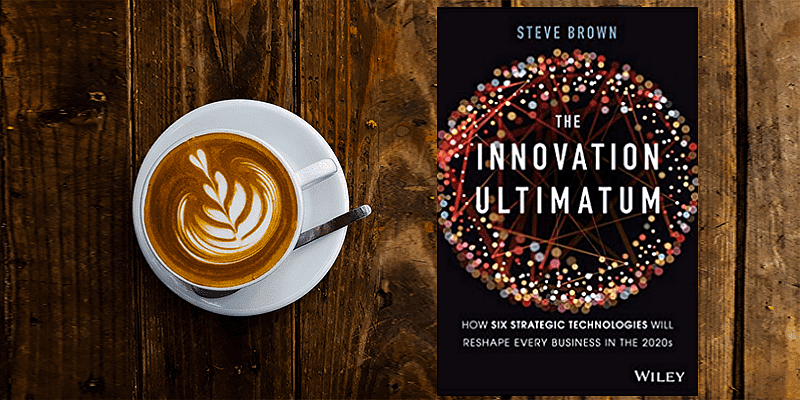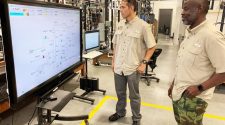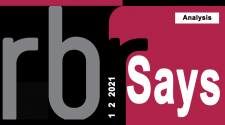Launched in 2012, YourStory’s Book Review section features over 275 titles on creativity, innovation, knowledge work, and digital transformation. See also our related columns The Turning Point, Techie Tuesdays, and Storybites.
Waves of technology are combining and converging to reshape every industry. They open up new opportunities for entrepreneurs, and also present an ultimatum to business leaders to embrace these technologies and transform themselves, according to this compelling new book.
Scenarios of tech change and sectoral impacts are provocatively presented in Steve Brown’s book, The Innovation Ultimatum: How six strategic technologies will reshape every business in the 2020s.
The six key strategic technologies for business are artificial intelligence, augmented reality, blockchain, the Internet of Things, 5G networks, and autonomous machines.
The three sections of the book present tech overviews, business responses, and sector scenarios. Entrepreneurs will appreciate the profiles of startups seizing opportunities in this space.
Steve Brown was formerly Futurist and Chief Evangelist at Intel Corporation. He now runs his own consultancy, Possibility and Purpose. Born and educated in the UK, he now lives in Portland, Oregon. On a humorous note, he is also known as the ‘bald futurist’.
Here are my key clusters of takeaways from this must-read 300-page book, summarised in the tables below. See also my reviews of the related books, Prediction Machines; Seeing Digital; A Human’s Guide to Machine Intelligence; Machine, Platform, Crowd; and The AI Advantage.
“The future isn’t fixed,” writes Arizona State University professor Brian David Johnson in the foreword. Instead of “freeze, flight or fight” responses in the face of change, people should be an active participant in creating the future they want, he adds.
“Every company will become a technology company, and every company will become a data company,” Steve begins. “Businesses will experience more technology-driven change in the next ten years than in the last forty,” he adds.
The six technologies described in the book are like the colours of the “business innovation palette.” They bridge the physical and digital worlds. “Computing capabilities, and value created in the digital word, both advance exponentially,” Steve adds.
The author presents scenarios in a largely upbeat manner, though cautioning that the journey has risks as well. “We must retain healthy scepticism and ask tough questions about new technology, but remain open to the bounties it will bring,” Steve emphasises.
“In the 2020s, the companies that thrive will be ones that never rest on their laurels,” he predicts. Technologies and their creative combinations will keep evolving, and customers will keep expecting companies to delight them, not just deliver or surprise.
1. Artificial intelligence
“Artificial intelligence will have an impact as profound as both electrification and the digital computer,” Steve writes. “Traditional digital” with pre-programmed rules will be complemented by AI.
As examples, the author cites Scriptbook, which predicts box office performance of movie scripts. The Associated Press uses Wordsmith to generate stories about sports and earnings reports. Quillioniz generates quizzes and multiple-choice questions from a body of text.
Underwriter.ai helps identify new low-risk loan candidates. DeepMind’s AlphaGo Zero plays games against itself via simulations, and has beaten the original AlphaGo.
Autodesk’s collaborative AI helps engineers and architects via generative design and comes up with creative options. Netflix and Spotify make lightning-fast data-driven decisions for recommendations.
AI will turbocharge sensors and make them “super sensors”. Generative Adversarial Networks (GANs) are two AIs that compete with each other (like ‘forger’ and ‘detective’) and improve overall performance.
Digital voice agents help with tasks and advice. Along with AR, this can meet the needs of the vast majority of the workforce who perform tasks away from desks and screens. The Open Voice Network is building voice standards equivalent to the web’s HTML.
Radiologists are using AI-based tools as a valuable “second opinion” to read charts, and helps them focus more on patient-centred tasks. Police departments are using AI like PredPol to spot crime patterns, but care should be taken to remove racial data to avoid racial bias, the author cautions.
“We should hold our AIs to even higher standards than we hold ourselves,” Steve urges. “We should expect our AIs to operate ethically, fairly, and without bias,” he adds.
While “narrow AI” is delivering impressive performance, the holy grail is Artificial General Intelligence (AGI, or strong AI; as good as a human) and Artificial Super Intelligence (ASI, or super AI; surpasses the best humans).
2. Internet of Things
The term ‘Internet of Things’ was first coined in 1999 by UK entrepreneur Kevin Ashton, and is now also referred to as ubiquitous computing or ambient/embedded intelligence. Sensors make everything connected, interactive, responsive, and smart, Steve describes.
“Sensors enable us to make the world ‘programmable’,” he writes. Dumb products can become service portals, eg. teddy bears that can teach children languages. Smart objects can become “enchanted objects”, in the words of MIT Media Lab’s David Rose.
IoT combined with AI can deliver descriptive, diagnostic, predictive and prescriptive analytics. Correlations between weather patterns and shopping habits can be unearthed. “Wearables and hearables” are transforming healthcare.
For example, Beam Dental’s smart connected tootbrush analyses brushing patterns and gives oral health tips. Progressive Insurance’s Snapshot device in cars measures driver risk. Aurora Healthcare is analysed 10 years of its clinical treatment data to reduce readmission rates.
3. Autonomous machines
Though autonomous machines are an AI application, their physical manifestation and socio-economic impact calls for a separate chapter, the author explains. This includes robots, cobots, drones, and self-driving vehicles.
“The term robot was first coined by Josef Capek back in the 1970s,” the author describes. Robots are particularly good for taking over tasks that are dangerous, uncomfortable, repetitive, boring and predictable. Robots have greater endurance, and will “elevate human work.”
Robots are now used for agricultural harvesting and removal of weeds, and in factory assembly lines. Drones are used for surveillance, delivery, and precision agriculture.
4. Blockchain
Blockchain and distributed ledgers can transform records, transactions and services. “Blockchain has the potential for a similar level of impact and market penetration as HTML,” the author predicts, pointing to the opportunities and disruptions of the web as a comparison.
“Blockchain technology will decentralise power structures, reduce transaction costs, improve traceability, secure data and assets, increase transparency, enable new value creation, and construct new incentive and funding models,” Steve explains.
Blockchain is like an “electronic agreement machine,” and enables trust, truth and transparency. The massive distributed and decentralised redundancy makes it more secure but less efficient in storing information, the author observes. Third-generation blockchains do away with the energy-intensive mining of earlier versions.
The underlying code acts as a “self-executing contract” or smart contract, and will transform the “trust industry.” Tokens can be used to incentivise good behaviour, eg. sharing of temperature data in supply chains.
For example, Legaltech firm Mattereum wants to enable the “internet of agreements” and make it easier to resolve legal disputes. DTube is a blockchain-based competitor to YouTube, and Arcade City and La’Zooz are blockchain-based alternatives to Uber.
PowerLedger enables energy trading, and Insurwave underwrites ships and cargo delivery. There are also platforms for decentralised storage (Filecoin) and computing (Golem).
Blendle wants to be the “Spotify of journalism” via micro-payments, and Coinetize allows writers to charge small fees in Bitcoin to access articles. BitGive Foundation allows philanthropic donations in Bitcoin to track charitable contributions.
5. Mixed reality
While virtual reality (VR) disconnects users from their immediate surroundings and transforms them to another world, AR (augmented reality) overlays digital information on the user’s view of the physical word, the author clarifies.
Steve cites a lesser-known computing law called Bell’s Law, formulated by Intel’s Gordon Bell in 1972. It observes that every decade, computers shrink in prize and size to create an entirely new class of computing. Steve points to mainframes, minicomputers, PCs, laptops, and mobiles as examples of this progression over the decades from the 1960s onwards.
AR is the new display. “The breakthrough display of the twenty-first century will be the physical world itself,” the author evocatively describes. “Gesture and voice are the new keyboard and mouse,” he adds.
This will benefit the 80 percent of workers who work outside traditional office environments, ranging from construction workers to surgeons. Use cases include experiential training, remote work, and augmented workers. But care should be taken to avoid information overload and distracting content, the author cautions.
6. 5G networks and satellites
Upcoming 5G networks offer better speeds, higher bandwidth, lower latency, and better security. This will enable new applications like connected autonomous vehicles and telesurgery, the author predicts.
A range of new satellite constellations will expand telecom networks and terrestrial monitoring for agricultural and forestry services. Examples include the 648 satellites of OneWeb and 3,236 satellites of Amazon’s Project Kuiper.
Business responses
These six technologies have a vast data output as well as voracious appetite for data. “Today’s data is tomorrow’s AI fuel,” Steve evocatively describes. Companies should build quality data pipelines for better decision-making, and gather or buy this data. “Data feeds AI, and AI drives competitiveness,” he adds.
Companies like Google and Amazon are building “data spirals” all the time to improve their offerings. In 2017, Google launched its “AI-first” strategy, and made data access a strategic imperative.
Customisation involves adding features that the customers can pick from or modify, whereas in personalisation the choices are made in advance by the seller. “Personalisation has the power to delight and saves people time,” the author explains. Together, customisation and personalisation can reduce friction for the customer.
The author advises companies to elevate their offerings – “from products to services to experiences to transformations.” AI combined with IoT can be a good combination here.
To survive and thrive in the emerging scenarios, the author advises employees to make themselves “robot proof” by upskilling in new domains and doubling down on their unique human qualities. Social safety nets and universal basic income may be needed for those who find it tough to make the transition.
AI will automate some tasks (not jobs) and boost “augmented work”. Roles that will be impacted included cashiers, clerks and drivers. AI should be regarded more as “teammates than tools” as it allows humans to focus on more meaningful and impactful work, Steve advises.
Companies should master the combination of human capabilities with AI. Automation initiatives should involve participation of engineers, designers and ethnographers to properly understand the human context.
Human skills are in imagination, curiosity, creativity, critical thinking, holistic views, cultural understanding, entrepreneurship, social influence, inspiration, and leadership. AI is good at pattern recognition, accuracy, and speed, and can be trained to eliminate bias, the author explains.
People should cultivate multi-disciplinary “T-shaped” skill profiles, and engineers and liberal arts graduates should have a healthy respect for each other. “Lifelong learning is the new normal,” Steve emphasises.
“New roles will be created at the intersection of previously separate disciplines,” the author observes. As examples, he cites machine ethics, virtual object design, organism design, and even digital sculptor and longevity coach.
An outstanding figure in the book spells out a hierarchy of business goals for automation projects. Automation calls for resources (eg. data, intelligence, time), and yields business results (eg. productivity, risk management, quality). Businesses build capabilities through automation (eg. agility, sustainability).
Higher-order business outcomes include customer satisfaction, safety and knowledge transfer. But the highest goals are human factors, the author emphasises: happiness, freedom, creativity, and confidence.
“Get quick wins but keep your aim high,” the author advises. “Organisations must remain cost competitive and support their people,” he adds, cautioning against “over-automation” that strips away the human differentiator in business.
Industry transformation
The third section of the book shares scenarios of tech transformation in seven sectors, ranging from education and healthcare to mobility and manufacturing. The author urges business leaders to learn from digital transformation in sectors other than their own as well. Stagnant industries will go through “long-overdue change.”

“The world’s aging demographic is a ticking time bomb,” he cautions, pointing to a range of digital interventions in this regard. Climate change is another challenge, and smarter mobility solutions using electric vehicles can help here.
Ecommerce is transforming retail, but people still value the fun of social shopping with friends. Some consumers focus on price, speed and convenience, others want quality and the shopper experience, the author explains.
Some stores will transform themselves into showrooms only. AI will improve discovery, curation, design, and operations in retail, coupled with VR-enabled browsing.
Tech transformation will help create brand-centric supply chains, where customers can verify the truth of the “origin story” with respect to product source, ethical work practices, and environmental footprint.
“The ability to tell the origin stories of products will have commercial value. Build your supply chain with that in mind,” the author advises. Blockchain tokens can help incentivise such behaviour among suppliers.
“Digital dexterity” of robots is improving, “intelligent exoskeletons” will augment factory workers, and the “sentient factory” will take manufacturing to the next level. Co-workers can share insights with one another via “holographic notes” on AR displays.
In the real estate sector, architects can explore radical ideas by co-creation with AIs. Drones and robots will improve construction, and blockchain can reduce the onerous paperwork, the author explains, citing a number of startups active in this space.
Unfortunately, education is still too costly and inaccessible for many people in the world. Online education via players like Khan Academy, Coursera, Knewton, and Udacity can help here.
Good teachers will continue to play an important role as instructors and coaches, the author explains. But new technology should also support student-to-student learning, experiential education and customised teaching.
The road ahead
The concluding chapter urges businesses to embrace technology in the service of people, not just profits. It is at the “intersection of possibility and purpose” that strategy and impact should be positioned.
Companies should be clear about what kind of future they want to create – and avoid. The author provides a range of tips and principles in this regard.
Create frictionless and memorable experiences. Elevate human work and respect individuality. Boost technology literacy and empower employees. “Build a modern culture of innovation,” he advises.
“In a time of great possibility, those with the strongest sense of purpose and the greatest will to drive change will prevail,” Steve signs off.
YourStory has also published the pocketbook ‘Proverbs and Quotes for Entrepreneurs: A World of Inspiration for Startups’ as a creative and motivational guide for innovators (downloadable as apps here: Apple, Android).

















